Abstract
The direct action of intraluminal senna and related compounds on the human colon and rectum has been investigated. Motility was recorded by balloon kymography with recording units inserted into well established transverse colostomies or into the rectum.
The motility of the colon was not changed by intraluminal senna glycosides but the introduction of senna previously incubated with faeces or Esch. coli stimulated the colon to peristalt. The peristalsis was similar to that stimulated by rheinanthrone, an oxanthrone produced by chemical hydrolysis and reduction of senna.
Both activated senna and rheinanthrone appeared to act in the colon by contact stimulation. No peristaltic response was stimulated in the rectum, either with activated senna or with rheinanthrone.
Full text
PDF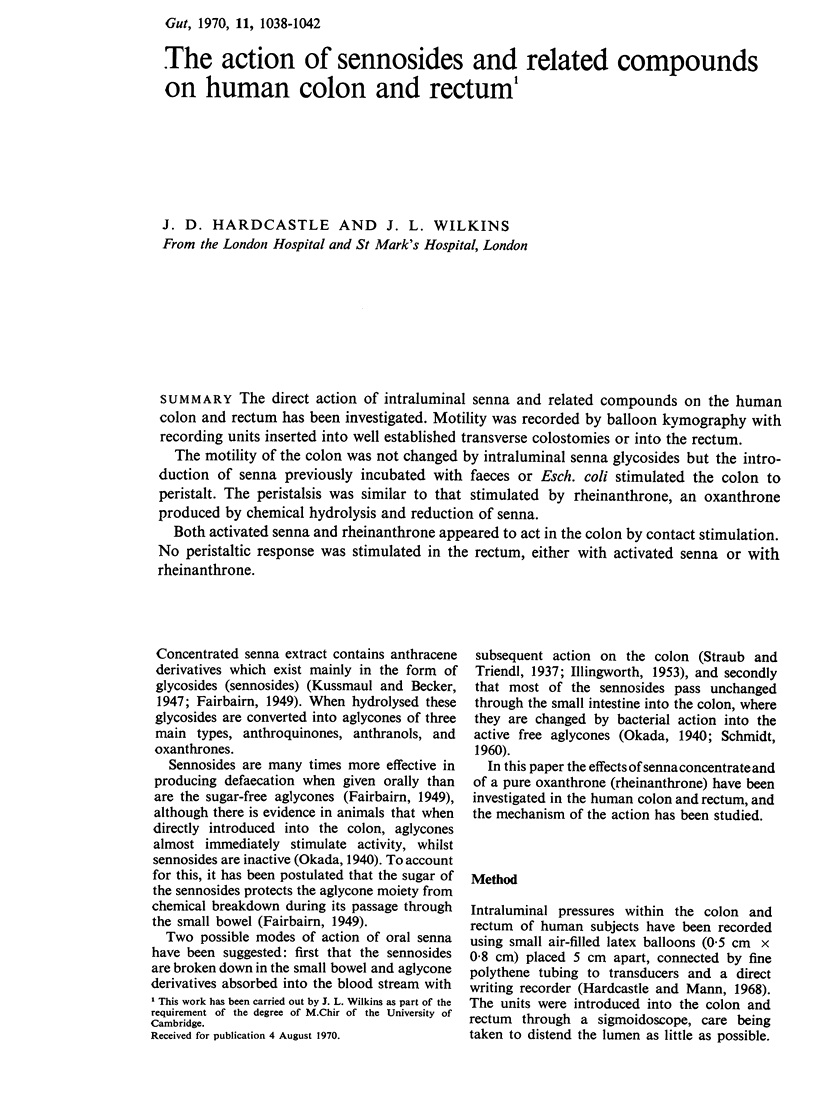
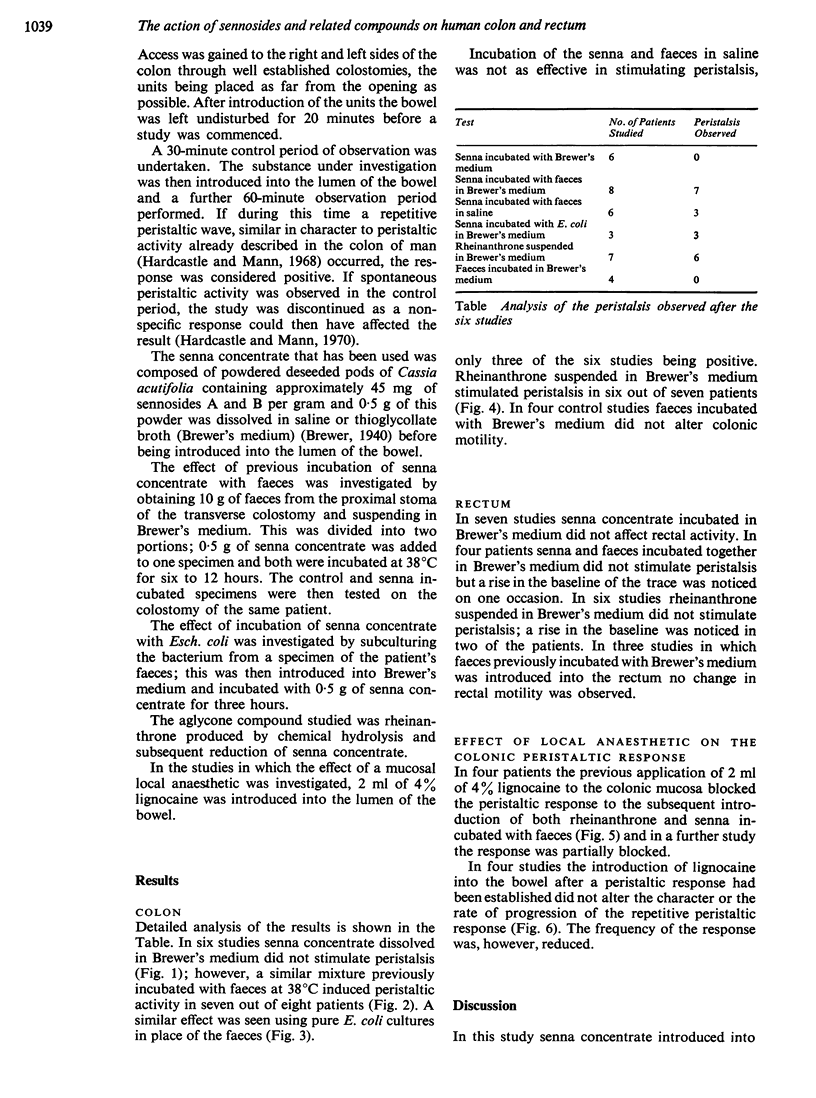
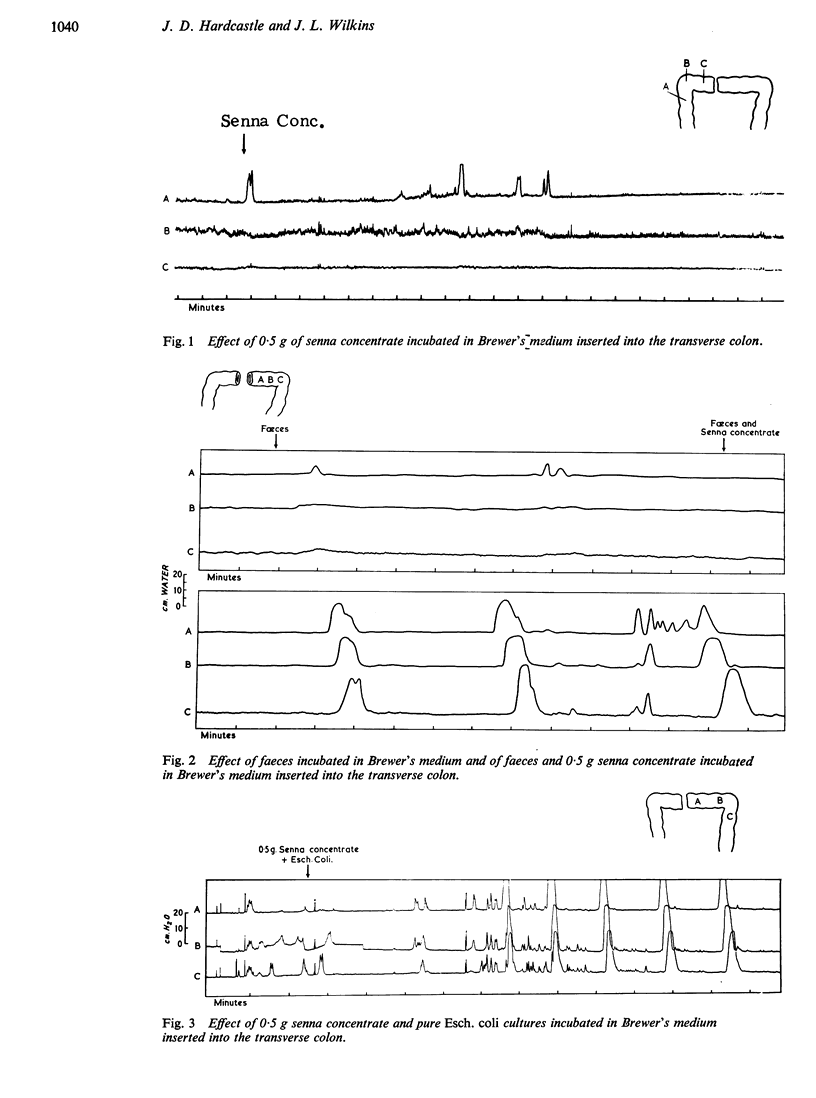
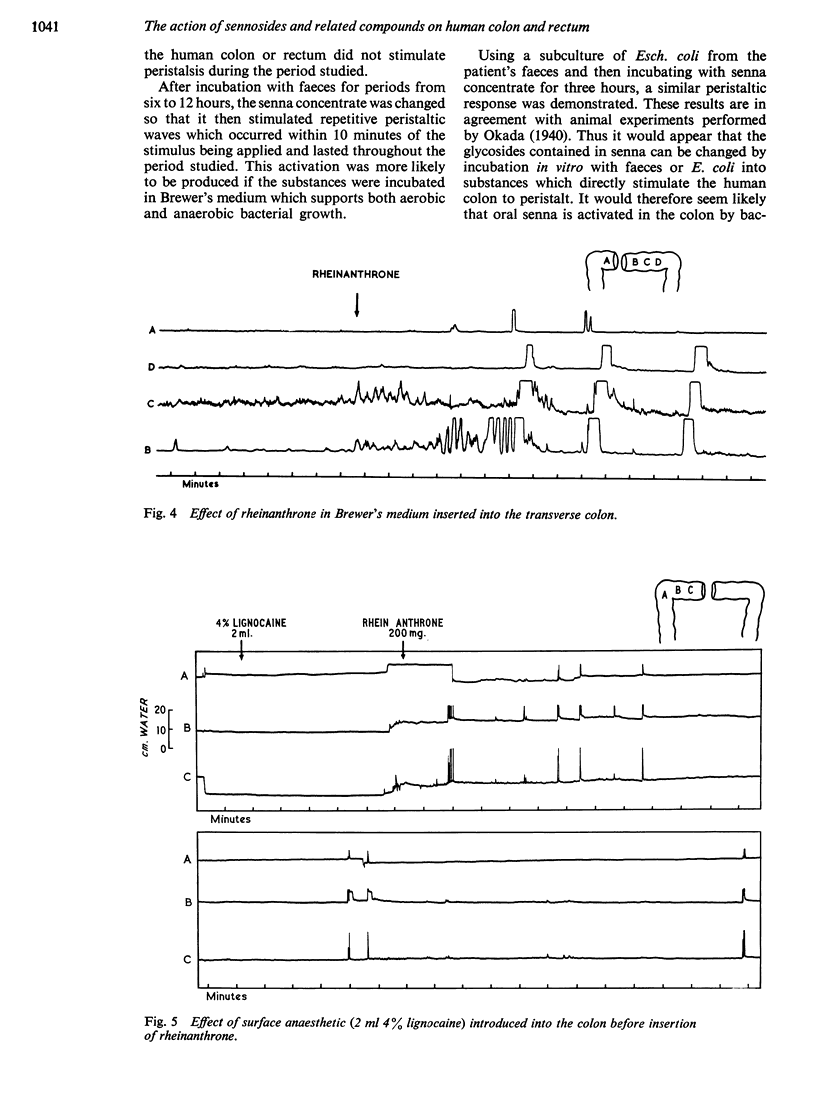
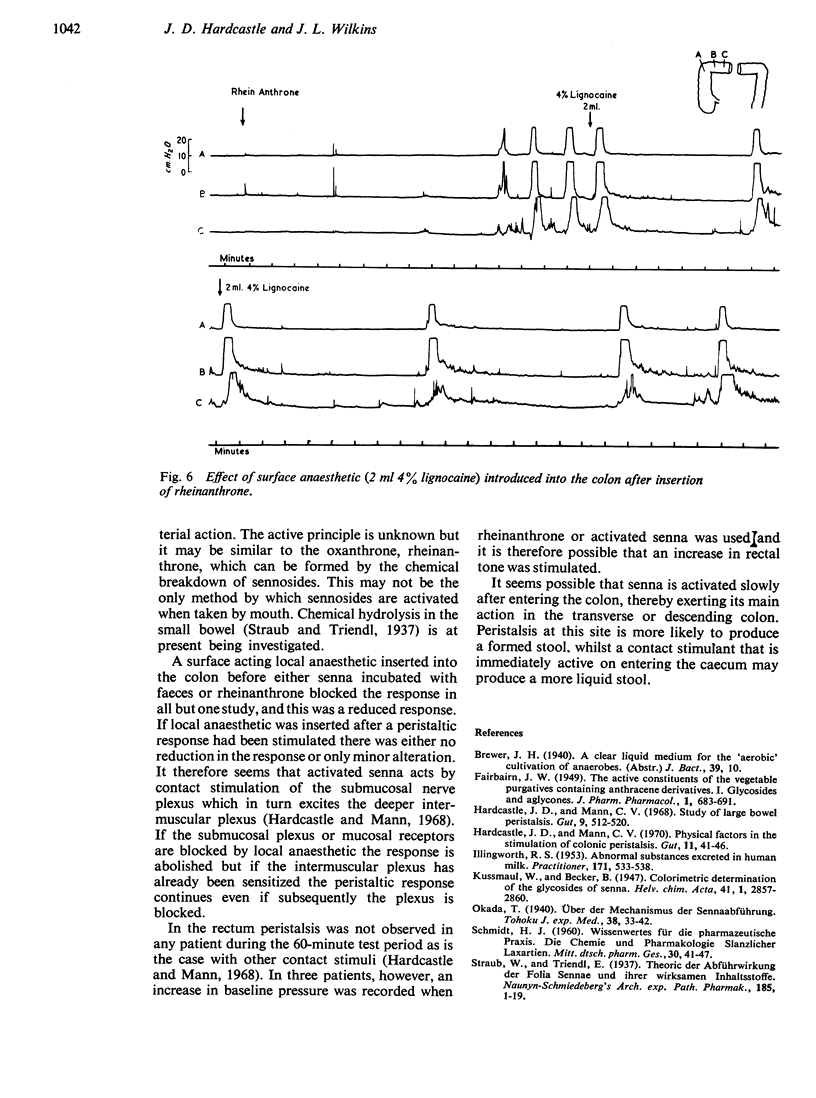
Selected References
These references are in PubMed. This may not be the complete list of references from this article.
- Hardcastle J. D., Mann C. V. Physical factors in the stimulation of colonic peristalsis. Gut. 1970 Jan;11(1):41–46. doi: 10.1136/gut.11.1.41. [DOI] [PMC free article] [PubMed] [Google Scholar]
- Hardcastle J. D., Mann C. V. Study of large bowel peristalsis. Gut. 1968 Oct;9(5):512–520. doi: 10.1136/gut.9.5.512. [DOI] [PMC free article] [PubMed] [Google Scholar]
- ILLINGWORTH R. S. Abnormal substances excreted in human milk. Practitioner. 1953 Nov;171(1025):533–538. [PubMed] [Google Scholar]


